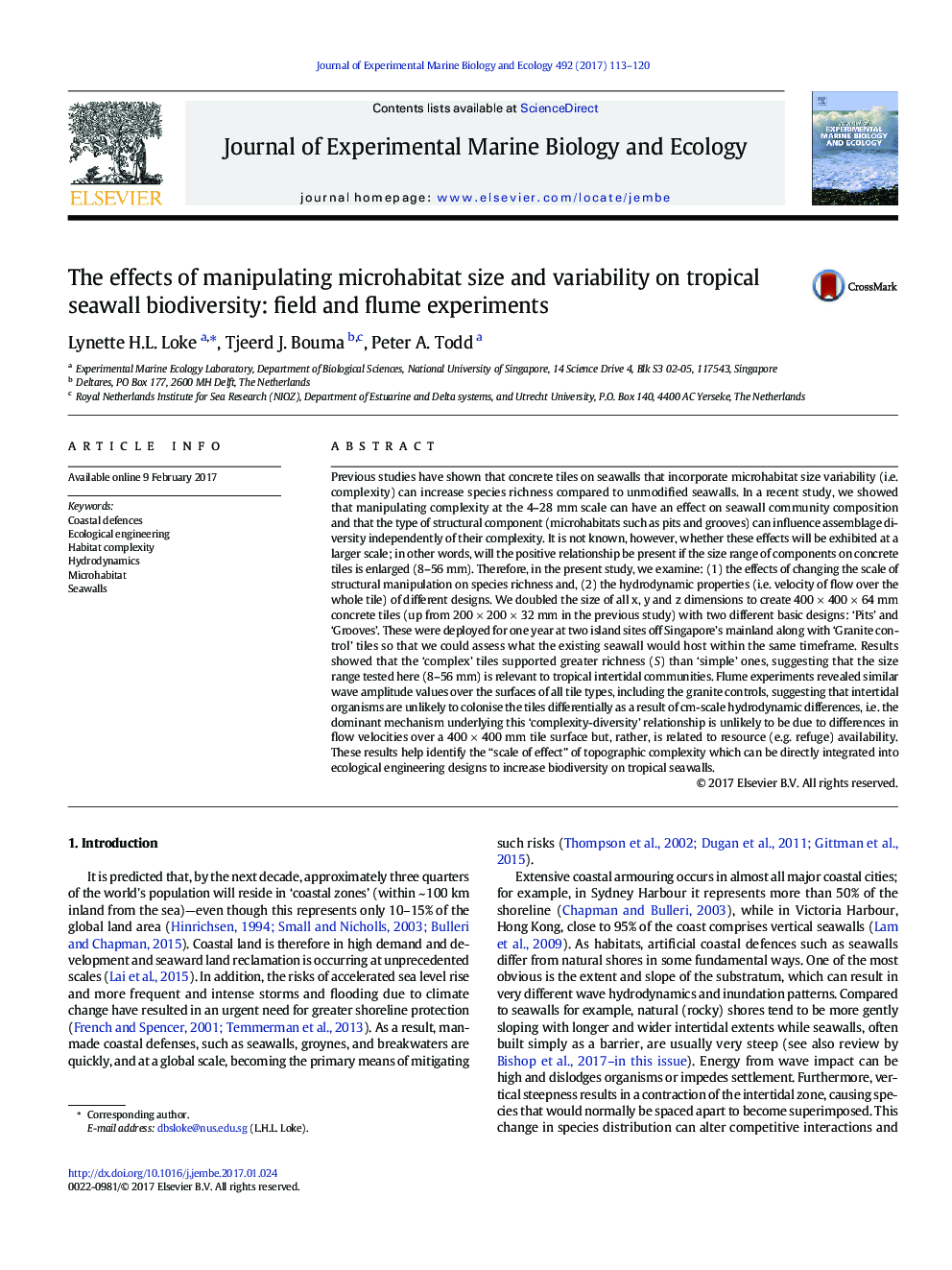| کد مقاله | کد نشریه | سال انتشار | مقاله انگلیسی | نسخه تمام متن |
|---|---|---|---|---|
| 5744526 | 1618383 | 2017 | 8 صفحه PDF | دانلود رایگان |
Previous studies have shown that concrete tiles on seawalls that incorporate microhabitat size variability (i.e. complexity) can increase species richness compared to unmodified seawalls. In a recent study, we showed that manipulating complexity at the 4-28Â mm scale can have an effect on seawall community composition and that the type of structural component (microhabitats such as pits and grooves) can influence assemblage diversity independently of their complexity. It is not known, however, whether these effects will be exhibited at a larger scale; in other words, will the positive relationship be present if the size range of components on concrete tiles is enlarged (8-56Â mm). Therefore, in the present study, we examine: (1) the effects of changing the scale of structural manipulation on species richness and, (2) the hydrodynamic properties (i.e. velocity of flow over the whole tile) of different designs. We doubled the size of all x, y and z dimensions to create 400Â ÃÂ 400Â ÃÂ 64Â mm concrete tiles (up from 200Â ÃÂ 200Â ÃÂ 32 mm in the previous study) with two different basic designs: 'Pits' and 'Grooves'. These were deployed for one year at two island sites off Singapore's mainland along with 'Granite control' tiles so that we could assess what the existing seawall would host within the same timeframe. Results showed that the 'complex' tiles supported greater richness (S) than 'simple' ones, suggesting that the size range tested here (8-56Â mm) is relevant to tropical intertidal communities. Flume experiments revealed similar wave amplitude values over the surfaces of all tile types, including the granite controls, suggesting that intertidal organisms are unlikely to colonise the tiles differentially as a result of cm-scale hydrodynamic differences, i.e. the dominant mechanism underlying this 'complexity-diversity' relationship is unlikely to be due to differences in flow velocities over a 400Â ÃÂ 400 mm tile surface but, rather, is related to resource (e.g. refuge) availability. These results help identify the “scale of effect” of topographic complexity which can be directly integrated into ecological engineering designs to increase biodiversity on tropical seawalls.
Journal: Journal of Experimental Marine Biology and Ecology - Volume 492, July 2017, Pages 113-120
